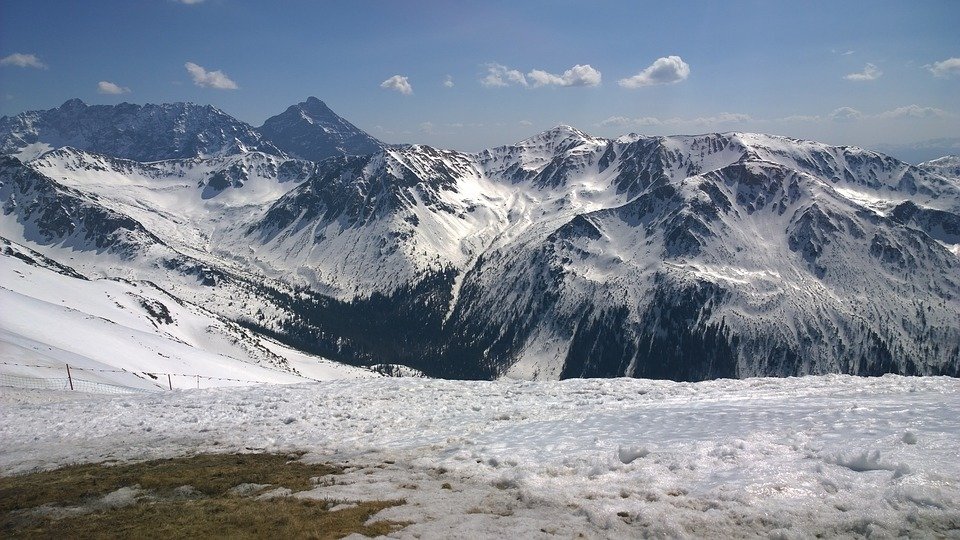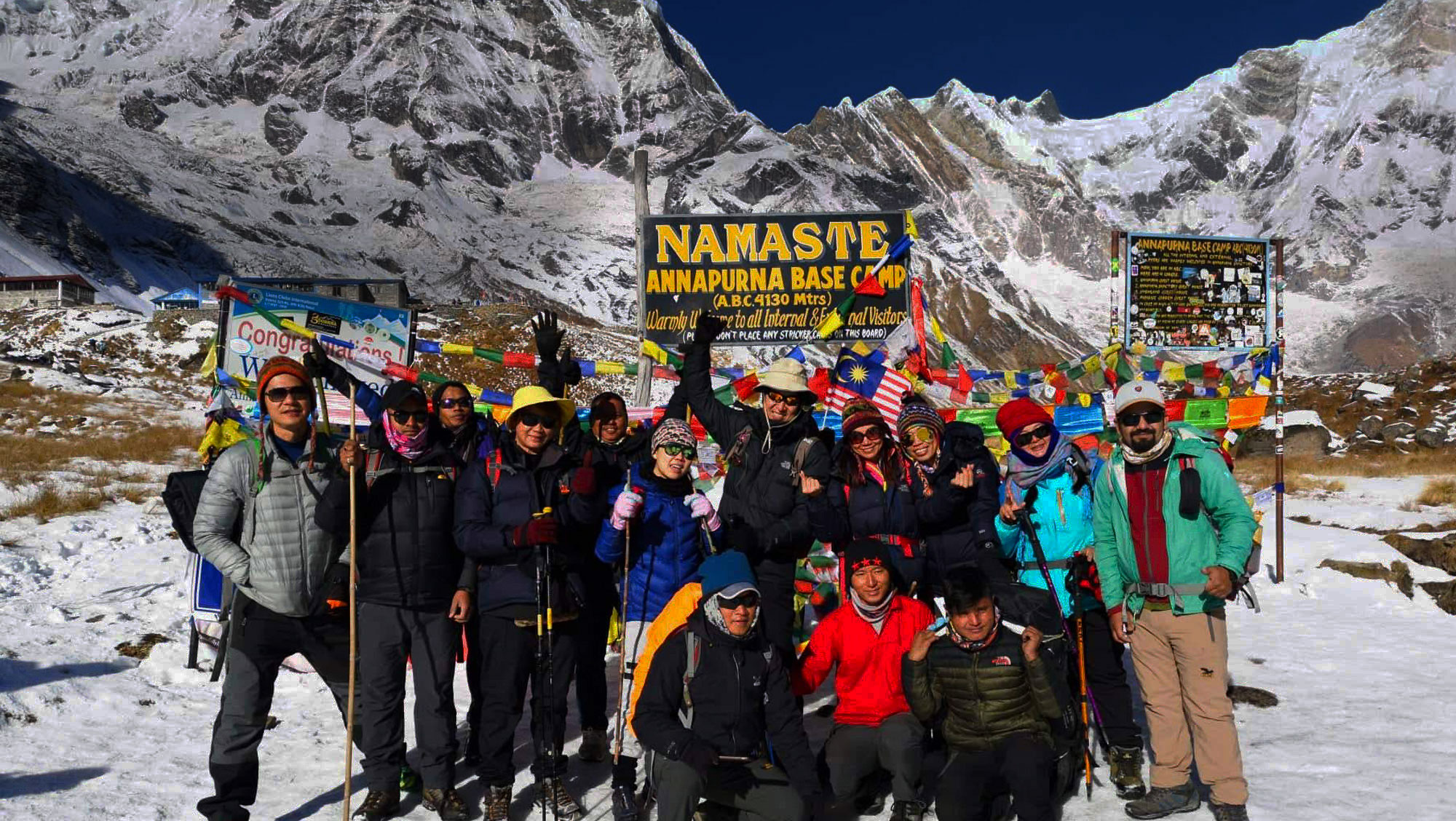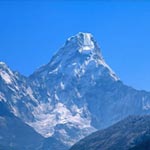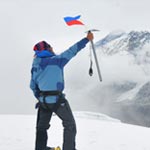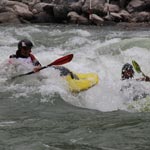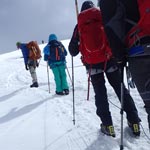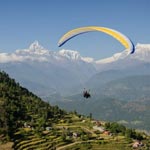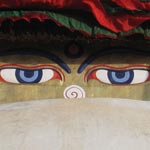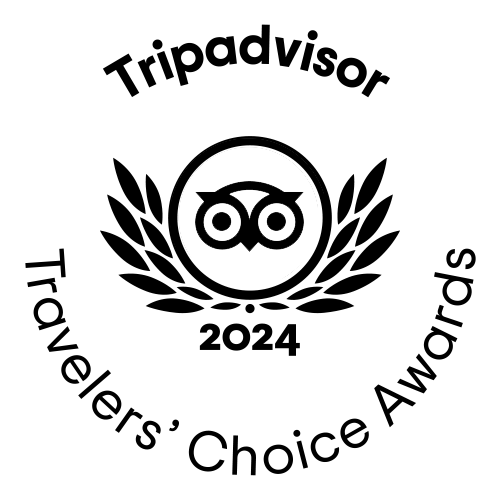Click outside the modal to close.
- HOME
- TREKKING
- Annapurna Region
- Everest Region
- Everest Panorama Trek
- Gokyo Lake Trek
- EBC via Gokyo Lake and Cho- La Pass
- Everest Three High Passes Trek
- Everest Base Camp Trek via Jiri
- Everest Base Camp with Island Peak
- Everest Base Camp Trek
- Trek to Everest Base Camp
- Everest Sherpa Village Trek
- Everest Trekking & Return Heli Flight
- Mani Rimdu Festival Trekking
- Everest Base Camp Luxury Trek
- Langtang Region
- Mustang Region
- Peak Climbing
- Other Region
- DAY TOURS
- Paragliding in Pokhara - Day trip
- Nagarkot and Bhaktapur - Day Tour
- Everest Flight ( Mountain Flight)
- Everest Base Camp Helicopter Tour
- Helicopter Tour to Langtang Valley
- Pokhara City- Day Tour
- Heli Tour to Annapurna Base Camp
- Rickshaw ride around Kathmandu- Day tour
- Chandragiri Cable Car Ride- Day tour
- ABOUT US
- INFO
- TRAVEL GUIDE
- BOOK NOW
- CONTACT
Pisang Peak is one of the famous peak in Annapurna region for climbing involves trekking in the famous Annapurna region and summiting. Additionally, we also visit Muktinath and trek in the beautiful Manang region of Nepal. Our 18-day journey begins in Kathmandu where we meet our climbing leaders/guides and fellow climbers. We enjoy views of Annapurna, Tilicho, and Gangapurna on our trek leading to Pisang Peak and summit the peak on the ninth day of our journey. The views of the Annapurna ranges, Dhaulagiri, and the other Himalayas from the top are magnificent. On our way back we follow the route that leads us to cross Muktinath which is an important pilgrimage site for Nepalese people. Our Pisang Peak itinerary also includes the beautiful Jomsom region which will be a worthwhile experience. For mountaineers, the Pisang Peak climbing is one of the famous adventure activities in Nepal. We drive from Kathmandu to Besisahar - the starting point of the Annapurna circuit trekking. We follow the circuit trail up till the village of Pisang, climb the peak, get back to the circuit trail and continue towards the Thorung La Pass (5,416m) – the highest pass of the Annapurna region, then walk down to Jomsom via Muktinath. Following day we fly to Pokhara and drive to Kathmandu from there, ending our amazing trip in Nepal. Trip Highlights We acknowledge that you are joining us for the adventure trip in Himalayan region of Nepal, where weather conditions, health, and fitness of the member or unexpected natural disaster can compel us to change the itinerary and if so you have to understand it but we would try our best to keep the suggested itinerary as per the original schedule. Your safety and satisfaction of the trip is our paramount concern while traveling with Aiming Adventure and we ensure you our best team, logistics, professional services to make sure that you would have an amazing trip of the lifetime with us. Also note that our trip leader deserved the final decision if the trip has to amend, change the route or cancel due to the extreme conditions for the safety precaution. However, he will try his best to ensure that the trip runs according to the stated plan but be prepared for flexibility if necessary. Aiming Adventure suggests you get a travel insurance that covers all the added expenses that might result due to various health issues, injuries or accidents (together with the air ambulance, helicopter rescue, and other treatment costs). Also, make sure that your insurance policy covers all the extra activities that you are planning to accomplish throughout your stay in Nepal. In addition to this, the policy should also cover death, misplaced luggage, theft and liability, cancellations, medical treatment (counting hospital charges, cost of the medicine, doctor’s fees) as well as repatriation cost. Most of the days while trekking in Nepal takes you above an altitude of 3000m, it is kindly requested to ensure that your insurance policy covers treks that go over 4000m. Buying insurance is highly recommended. Trekking in Nepal is physically tougher in some of the regions. However, no previous trekking experienced is required but if you have, it is a great plus point. Trekking in Nepal is a non-technical walk. The highest height you would reach on your trip is 6,092m (Pisang Peak) from sea level. The walk involves lots of ups and downhill takes you through local villages, farming lands, terraces, and riverside but as long as you have a strength of walking for 4 to 6 hours a day, you are qualified for the trek. However, you should be having moderate health and fitness. We strongly suggest travelers consult with your medical doctor before traveling and do the regular checkup of your health and report us while booking a trip with us. A part of the health and fitness, the participant must be having a positive attitude and strong determination for the successful trip. AMS (acute mountain sickness) is a serious issue. It is the result of the failure of the body to adapt to high altitude and can affect anyone, regardless of age or fitness. It usually occurs above 2,500m and the likelihood of being affected increases as you ascend. The way to reduce the affects of altitude is to ascend slowly, 300 meters per day above 3,000 meters until you have acclimatized. Poor acclimatization results in a headache, nausea, sleeplessness, difficulty breathing and swelling of fingers and glands. The only cure for AMS is to descend to a lower altitude and your guide’s decision on this matter is final. Although our routes are carefully planned to allow for proper acclimatization you may feel some effects of altitude for the first few days or at higher altitudes. Breathlessness, lethargy and mild headaches are not uncommon and generally decrease as your body adjusts. Maintaining adequate fluid intake is essential. Please advise your guide if you feel more severe symptoms and do not medicate yourself without discussing it with them first. Aiming Adventure offers a wonderful opportunity to help you visit those areas, cultures, and traditions of Nepal that have never been explored before. Your trip itineraries are fully customized in order to meet the individual needs and interests of each traveler. We also partner with local people and Leaders to help you get the maximum out of the trip. We are highly dedicated and offer years of experience to plan an outstanding adventure trip for you. Customer service is our top priority; therefore, we cater to every possible need of yours during your stay in Nepal, be it the food, accommodation, varied destination or your communication needs. Despite all these facilities, our best packages are offered at a very competitive rate. Nepal visa is the easiest visa to obtain; you may buy your Nepal visa at your nearest Nepalese Embassy/ Consulate or Mission offices abroad or buy this upon on arrival to Kathmandu international airport upon your arrival. You have to have 2 passport size photographs, Visa fees in USD cash & valid passport at least for 6 months valid at the starting of the trip. By Air: Tribhuvan International Airport, Kathmandu is the only international airport in Nepal if you are coming by any international flights. By Overland: Tourist Visa Fees: 3 days transit visa - Free of Cost In this Annapurna Circuit and the peak climbing, the minimum group size would be two and the maximum group size is ten or more on request. We can also organize a private trip for a solo person with a single supplement cost. Else, join our estimated group departure dates available online or ask us with your personal dates, we will open group date on the same date. Most of these hikes take you on the remote Himalayan region, it is very essential that you are accompanied by the very experienced and qualified & equipped leader for a safe and successful trip. We Aiming Adventure employee the local trek guide and staff who are trained and qualified on the trip we worked on. Our guides are trained and licensed from Nepal Gov., certify from TAAN & Nepal Mountaineering Association. All of our leading Trekking and Climbing Guides are experienced more than 10 years. We have trained them especially for your trip, to cater to the flexible needs of our peoples in the group joining from different countries, this double assure you that your trip is at the right and professional hands. While in Kathmandu and Pokhara, your accommodation is at standard hotels (Attached Bath, A/C, 24 hours running hot/cold shower) similar of 2 to 3-star standard hotel and while in the trek, your accommodation is at Mt. Lodge/local tea houses, they are clean and comfortable. Our entire accommodation is at twin share unless stated but single supplement accommodation is also available on personal request with the additional cost. We do have two best seasons to attempt this in Nepal. As this trip is a big trip for you, we always suggest you come at the right time of the year as far as possible. Along with warm clothes, you will also need other equipment for the sufficient protection of your body. Below is the list of necessary items that you need to pack before commencing your trek. Head- Hat (with a wide brim), Sunglasses (with UV protection), Sunscreen lotion and Lip balm Upper body- T-shirts (3), light and expedition weight thermal tops, Fleece jacket and pullover, fleece wind-stopper jacket (Optional), waterproof (preferably breathable fabric) shell jacket, down vest/jacket (included) Hands - Lightweight gloves, heavy-weight gloves/mittens with a waterproof outer shell Lower body - Underwear (4), hiking shorts (2), lightweight cotton long pants, light and expedition weight thermal bottoms, fleece or wool pants, waterproof (preferably breathable fabric) shell pants Feet - Thin, light-wear inner socks (4), thick, warm wool hiking socks (4), hiking boots with spare laces, camp shoes (sneakers and/or sandals), gaiters. Accessories - Sleeping bag rated to zero degrees F (included), headlamp with spare bulb and batteries, small padlock or combination lock, basic first aid kit, large plastic bags (for keeping items dry inside trek bag), day pack, water bottles (2), hiking pole/walking sticks, small earplugs Toiletries -Soap, shampoo, toothbrush, small wash towel Extras - Cameras with extra batteries and cards, binoculars, light balaclava or warm fleece hat, reading books, trip map/guidebook, journal & pen, iPod & travel games (like cards, chess, and backgammon) Vaccination is required to plan your trip to Nepal but it is not a must to have the thing to come, but highly suggested. Your doctor will have the information about the vaccination you would require in the country you will be traveling to. Hepatitis B, Japanese Encephalitis, Polio, Rabies, Tetanus, Typhoid, and Malaria, etc. are the recommended vaccination for travel Nepal. Our porters are fully equipped and insured for each trip they are undertaking with us. As you know that we are very sincere with the porter issues and their situation while on trek thus we make sure that our porters are fully prepared for the trip. We are closely working with the International Porter Progress Association for the welfare and be fit for the touristic porters. The maximum load carried by our porter is 20 to 40 KG maximum. These days, there are enough communication facilities on this trek, most of the local villages have local telephone booth phone thus if required, you can easily communicate with your friends and family, however, the cost is slightly expensive, 1-2 $ per minute. Nowadays, during the clear days, reception of Nepalese cell phones is on throughout the trail, your guide will have the cell phone on the trip. And most of the teahouses in the mountain has WI-FI facility with the cost 1-5 Dollar. However, sometimes cell phones or the internet may not work for a few days to be prepared for that. Once you would choose which trip you would like to book with us, write to us with the information or phone us on our phone number for the trip booking confirmation. We have an online trip booking option, you may go to that link, choose your trip and date and follow the instruction with the information required and submit us. You could also drop us a message in our online chat section or email us at [email protected]. Also, can call us in Cell/Viber/WhatsApp +977- 9849211457. We will be online 24/7 so that we could be able to respond you as early as possible. The Aiming Adventure welcomes you at the airport of the capital city of Nepal, Kathmandu. In order to receive you, the company sends one of the representatives at the Tribhuvan International Airport. Then you will be taken to the hotel which we have booked for you earlier. On reaching the hotel, you will get freshen up. Meanwhile, the company will organize a meeting in order to introduce you the trek members and for the briefing about the formalities and other necessary information. Tonight, the company will organize a welcome dinner at one of the popular local restaurants, where you will enjoy ethnic dance, music, and some items of Nepali foods. If you arrive late then the mentioned schedule will be managed for the following day. The capital, Kathmandu valley itself, is a big storehouse of exclusive natural, cultural and historical sites. Therefore, today, we take you to city tours to the major attractions of Kathmandu valley. After spending few hours observing these wonderful sites, we again meet for a few hours to finalize your clothing and trekking gears (down jacket, trekking boots, sleeping bags etc.) required during the trek. The night will be spent at a hotel in Kathmandu. This morning we leave Kathmandu for our long trek to Annapurna. Drive by local bus (there is no regular tourist bus but we can arrange private vehicle upon your request) to Beshishahar through the scenic countryside and river view. This is an interesting drive through the foothills of the Himalaya. En-route to Pokhara, our route diverts from the town village of Dumre towards north to Beshishahar. On arriving Beshishahar entry your permit number and rest at the hotel. This is big town and district headquarters of the Lamjung, explore the surrounding area and overnight at the hotel. Today, we begin our walk from Beshishahar with the fine view of Hiunchuli and peak 29 (Ngadi Chuli) and crossing some local wooden & bamboo bridges reach to Bhulbhule. It then continues to Ngadi village for lunch & remaining walk continue passing through waterfall through the river bank before hiking uphill reaching to Bahundanda for overnight. Today we walk through the mostly dirt road. This is a beautiful village on a top of the hill and you may have great chance to explore the evening time to the local village and around the school areas. After breakfast, the trek descends to Syange through the Gharmu village crossing fields and local villages, approx. of 2 hours short downhill walk & cross a long suspension bridge at Marshyangdi River to reach Syange. After here, our trek continues gradually uphill from the river and the last steep climb to get to Jagat. From here an hour further gentle walk through dirt road & long scenic waterfall across the river finally brings you at Chamje for the overnight stop. Bagarchhap is the destination of the day. Crossing the bridge across the Marsyangdi River, we first hike up to Sattale. Enjoying the fields of Marijuana, we now ascend on the steep stone trail towards the Manang district, leaving the Lamjung district behind. The trail still along the Marsyangdi River takes us to the first village of the Manang district, Tal, which greets us with a typical entrance gate influenced by the Tibetan culture. Leaving the village of Tal, we hike up to Kyodo, crossing the landslide area, where we cross a bridge across the Marsyangdi River and continue walk till Dharapani. From Dharapani, enjoying the forest of Pine and Fir, we walk up to Bagarchhap. The evening can be spent exploring the village of Bagarchhap. The night will be spent at a lodge in Bagarchhap. Chame is the destination of the day. We first hike up to Danakyu that offers dramatic views of the mountains. A steep hike from Danakyu will take us to the village of Timang. Passing through the forest of Pine, we descend to the settlement of Latamro. We cross the bridge to the village of Thanckok which is the popular spot for the lunch. A gentle ascent and flat trail, from the village, will take us to the settlement of Koto. Chame, the district headquarter of the Manang district is very near to this village. We further walk until we are greeted with a big white gate at Chame. The night will be spent at a lodge in Chame. The trails lead from the other side of the river on the northern bank passes through pine woods and small villages with few ups and downs till you reach the orchard village of Bhartang, a village of apple garden. Then, we continue on the gradual path up to a bridge, from the bridge a short steep climb through the pine forest brings you at the top of the ridge of Dhukur Pokhari for the lunch. After walking out of the tree line, a great view of Pisang peak on the north and the Chulu peak can be seen with Pisang village. From the top gentle descent of one hour brings you to windswept village of Pisang for overnight. Explore Pisang villages and it’s riverside and overnight at lodge. We begin our trek after breakfast towards the Pisang Base Camp. We ascend on a trail that passes through a thin forest and grasslands via upper Pisang. The pasture is used for grazing yaks and is also the best place to set up our camp. The ground is flat and falls on a frequented trail. Overnight at the Pisang Peak Base Camp at a tented camp. We ascend on the south-west ridge and reach the high camp. After setting up our camp, we participate on the basic climbing training. Our guides will provide training on peak climbing techniques and the proper ways of using climbing gears such as the ice Axe, climbing boots, and crampons, harness, ascender, etc. The training will also include using ropes to go up and down. Although it is not mandatory to have prior training for Pisang Peak climbing, we strongly believe that some training experience will boost your confidence and climbing skills to increase the chances of scaling the summit as well as to fully enjoy the experience. Overnight at Pisang Peak High Camp. We begin our trek early in the morning after breakfast. Today’s trail will be mostly on rocky surfaces. The peak is steep; therefore, there is not much snow. We will require around 20m of rope to climb on a ridge. Around the summit is around 70 degree of slope which will require of around 200m rope. Both fixed rope and the main rope will be used. The views of the Annapurna ranges and others are extraordinary from the summit. We return to the base camp for an overnight stay. From the base camp of Pisang Peak, we trek towards Pisang village. From Pisang, there are two routes to Manang. We choose the one which passes through Upper Pisang via Geru as it guarantees outstanding views of Mt. Annapurna, Pisang Peak, and others. As we walk near Manang the climate becomes more cold and dry. However, a short visit to Braga Monastery, the biggest monastery in the Manang District should cheer you up. Overnight at Manang. Ledhar is the destination of the day. Leaving Manang, the trail heads north-west away from the Marsyangdi River. Today we walk past Tanki, Ghunsang, and Yak Kharka on a scrub juniper and alpine grass, a few meadows along the Thorung River. From Yak Kharka, passing the rocky landslide area, we cross a bridge across the stream that will straight away take us to the settlement of Ledar. The night will be spent at a lodge in Ledhar. Thorang Phedi is the destination of the day. Leaving the alpine grasses and the meadows behind, enjoying the magnificent views of mountains and amazing landscape, we slowly head toward the Thorang Phedi on the trail along the Kone River. We then cross a bridge across the Kone River, get to the west bank of the river and continue on a narrow path across a high, unstable slope up till the Thorang Phedi. If you aren’t experiencing any altitude problem, you can also discuss with your leader and hike up to the high camp for overnight. However, the better option is to stay at Phedi, before attempting further height. The night will be spent at a lodge in Thorang Phedi. Crossing Thorong La pass, one of the highest passes in the world will be your ultimate objective today. You will be crossing the pass from east to west (Manang to Muktinath) which is the easiest and safest direction. You get up around three in the morning and walk up the mountain. When you finally make it to the top, you realize that your journey was worth it. You can take a few photos before heading to Muktinath Valley at the foot of the Thorong La pass. We continue trekking to Muktinath which is an important place of pilgrimage for both Hindus and Buddhists. Overnight in Muktinath. Muktinath is an important pilgrimage site for Buddhists and Hindus alike. In the morning, we tour the temple area and a Buddhist monastery located close to the temple. After the short tour, we continue our trek to Jomsom which is popular for its sweet apples and strong winds. In fact, there are even Nepalese songs that pay tribute to the strong gush, of wind that blows in Jomsom around noon. After reaching Jomsom, we can visit its Ecological Museum that provides information on Jomsom’s rich culture as well as the flora and fauna that are native to the valley. Overnight in Jomsom. Though Kathmandu is the destination of the day, we first fly from Jomsom to Pokhara as there is no direct flight from Jomsom to Kathmandu. Approx. 20 min scenic flight over the deepest gorge in the world between Annapurna and Dhaulagiri will first bring us to the beautiful city of Pokhara. From Pokhara, we catch a scenic flight to Kathmandu. (If you want to spend a day in Pokhara, we can make the necessary arrangements for you.) Once we arrive Kathmandu, you will be escorted to your hotel by one of our company representatives. After resting for some time, we meet one more time to discuss the entire trek and final official dinner. The night will be spent at a hotel in Kathmandu. Your adventure in Nepal comes to an end today. Aiming Adventure’s representative will drop off you to the airport approximately 3 hours before your scheduled flight. But, if you have more time to visit Nepal we are happy to load more trip upon your time, budget and interest. On your way home, you have plenty of time to plan your next adventure in the wonderful country of Nepal.
Group size:
2-10 pax
Transportation:
Private Car, Flight & Bus
Trip Type:
Tea House & Tented Camp
Arrival Location:
Kathmandu, Nepal
Departure Location:
Kathmandu, Nepal
Meals:
Breakfast, Lunch, Dinner
Max-Altitude:
6,092m/19,981ft at Pisang Peak Summit
Accommodation:
Mountain Tea House & Tented Camp
Cost Includes
Cost Excludes
Information about the Trip:
Travel Insurance
Health, experience, and fitness:
Altitude Information
Why to Trek with Aiming Adventure?
Passport & Visa Information:
Nationals of SAARC countries do not need the visa when visiting Nepal. As per this rule, Indian nationals do not require the visa. Transit visa is provided for foreign nationality for 3 days. Visa must be obtained for staying over the initial period of three days.How to get into Nepal and get Visa:
Group Size:
Our Guides, Trip, and Safety:
On every trip, there would be our one Trek guide and one porter. But if you are traveling with the more numbers there would be one trek leader and assistant guide (depend upon the group size). Also, we assign with every two trekkers would have one Sherpa helper for carrying your trekking bags.
Meals and Accommodation
In the city, only breakfast is included on the offered trip itinerary but while in trek full board of meals is included (Breakfast, Lunch & Dinner, and Tea- Coffee). We provide you food from the local tea- house/ Mt. Lodge from en route. Breakfast and dinner are to be provided from the same tea- house/ guest house we would overnight but lunch would be en route in between.
Foods provided depend on the availability of the Mt. lodges we would be staying but in general, you can have Nepalese cuisine (Dal Bhat), Tibetan fried bread, various soups, Mo Mo’s (steamed dumplings), potatoes, pasta and even a version of pizza! So, overall, you have a different choice of food on the trek. You can pick up from the menu whatever you would like to have.Best Trekking Seasons:
Spring: - (March, April, May) - Best warmest time to trek. Rhododendron flowers in bloom- excellent trails and clear skies, best visibility. Good Temperature, warmest weather of the year.
Autumn: - (Mid-September, October, and November) - Excellent trails, clear blue skies, best visibility, neither too hot nor too cold time. This is another best time to trek.
Winter Months: - (December, January, and February) are also good, but it’s obviously colder than other times. You have to be prepared for this. It is up to you to plan this trek at this cold time or not.
Summer: - Monsoon, so rain and visibility can be a big issue (from Mid-June, July, and August). We do not suggest you this time for the trek.What to bring?
Vaccination:
Taking Porters:
Communication facilities on this Trek:
How to Book:
Once your trip booking request would be received, we would suggest the final trip booking procedure with advance payment of the trip. The non-refundable deposit of 20% (per person) is required to confirm a place on your selected adventure.PACKAGE DETAILS
Day: 01 - Welcome day in Kathmandu - (1,300m/4,264 ft) -
Day: 02 - Kathmandu Valley sightseeing and trek preparation - (1,300m/4,264 ft) -
Day: 03 - Drive to Besisahar - (760m/2,493ft) - 7 hours
Day: 04 - Trek to Bahundanda - (1,310m/45,86ft) - 6-7 hours
Day: 05 - Trek to Chamje - (1,430m/4,625ft) - 6-7 hours
Day: 06 - Trek to Bagarchhap - (2,160m/6,824ft) - 5-6 hours
Day: 07 - Trek to Chame - (2,720m/8,923ft) - 5 hours
Day: 08 - Trek to Pisang - (3,200m/10,039ft) - 5 hours
Day: 09 - Trek to Pisang Peak Base Camp - (4,380m/14,370ft) - 3-4 hours
Day: 10 - Trek to Pisang Peak High Camp - (5,400m/17,712ft) - 4 hours
Day: 11 - Summit to the Peak and back to Base Camp - (6,091m/19,980ft) - 7-8 hours
Day: 12 - Pisang Peak Base Camp to Manang - (3,450m/11,316ft) - 6-7 hours
Day: 13 - Trek to Ladhar - (4,230m/13,877ft) - 5 hours
Day: 14 - Trek to Thorang Phedi - (4,450m/14,599ft) - 5 hours
Day: 15 - Trek to Throng Top and Walk Down to Muktinath - (3760)m - 7-8 hours
Day: 16 - Trek to Jomsom - (2720m/11,482ft) - 4 hours
Day: 17 - Fly to Pokhara and continue to Kathmandu - -
Day: 18 - Final Departure day to the Destination - -
YOU MAY ALSO LIKE
AIMING ADVENTURE
NEWSLETTER SUBSCRIPTION




